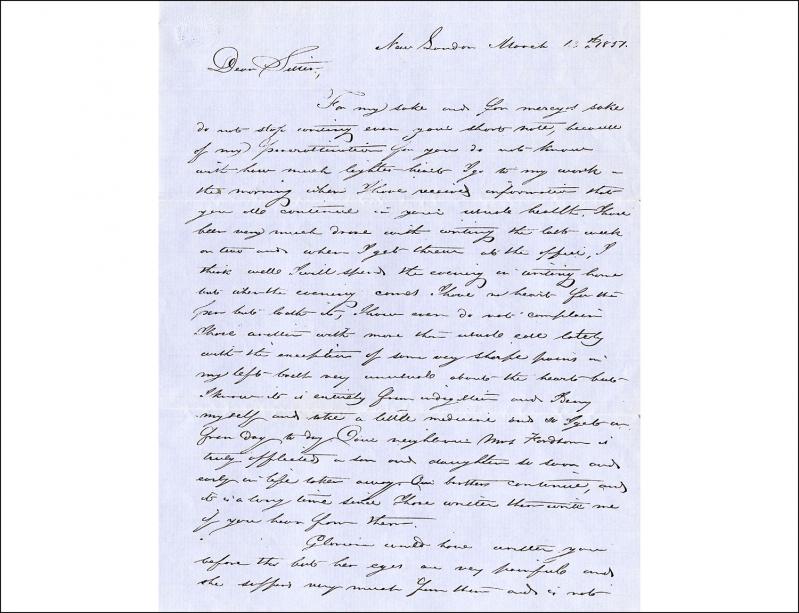On March 13, 1851, Henry Thomas Dering (1796-1854) wrote a short letter home to his older sister, Frances Mary Dering (1796-1874). At the time, Henry was living with his wife, the former Glorianna Havens (1800-1879), in New London, Conn., and Frances was living in Sag Harbor.
The Dering family was well known in Sag Harbor, as Henry’s father, Henry Packer Dering (1762-1822), was Sag Harbor’s first customs master. Shortly after his father’s death, Dering assumed that role for several periods between 1822 and 1849. It is uncertain why he left Sag Harbor for New London, but it might be related to the declining whaling industry, which he alludes to in his letter.
What makes this letter unusual is that Dering mentions the name “Hagar.” In the letter pictured here, he inquires how Hagar is doing, while in another two letters, he asks Frances if money is needed for Hagar’s account, even enclosing $10. Which prompts the question: Who was Hagar?
Hagar was born to Matilda (ca. 1748-1818), a woman enslaved by Thomas Dering (1720-1785), and Caesar (d. 1827), a man enslaved by Nicoll Havens (1733-1783). After their manumission, Matilda and Caesar married in 1800 and lived on Shelter Island until their deaths. Hagar, however, remained enslaved to Henry Packer Dering and moved to Sag Harbor with him and his family. Hagar was manumitted in 1802, and in 1808 she gave birth to a daughter named Jane (1808-1875).
It is uncertain when Hagar died, but Henry Thomas Dering’s letters reveal that she was alive and working for the family until at least 1853. Although this is only a small glimpse into Hagar’s life, it helps us better understand her story and the experience of African-Americans on the East End.
—
Megan Bardis is a librarian and archivist in the Long Island Collection.




